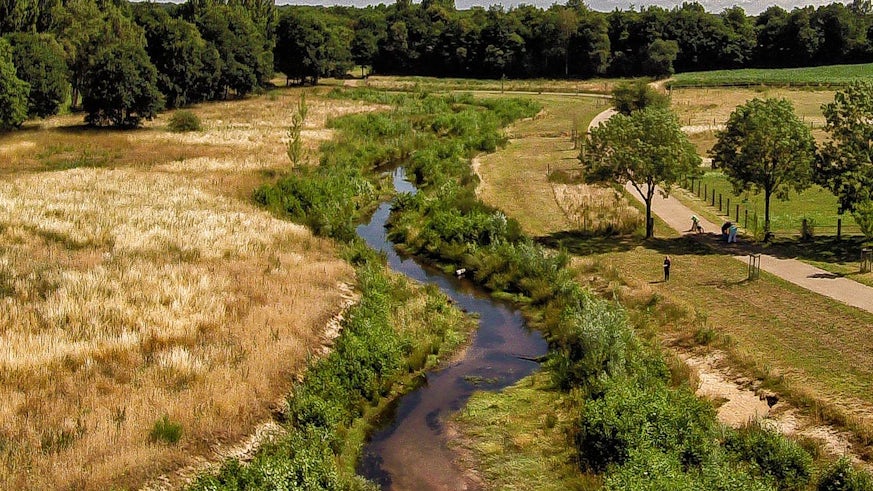When to trust your bank manager: riparian zones to protect and restore rivers
8 May 2018

Safeguarding the banks and margins of streams and rivers has a key role in ensuring aspects of river health.
That’s the major conclusion from a new international study just published in Water Research.
Protecting, planting and restoring native plants and their habitats alongside rivers provides food for aquatic organisms and prevents high temperatures in the fight against global warming. Bankside ‘riparian zones’ can also prevent some of the pressures on rivers that arise from activities in their wider catchment – such as farming – but not always.
Rivers provide critical human resources, such as clean water, food and recreation, but are threatened increasingly by pollution, physical modification and over-exploitation. While international efforts, such as the EU Water Framework Directive, aim at evaluating and restoring river health to protect biodiversity and people they are not always effective in reversing damage. A key need has been to evaluate why, and to find the options that work best under different circumstances.
The international team of researchers addressed this need during the EU MARS project by reviewing available scientific literature, asking which vegetation types were linked to successful restoration. They also evaluated how riparian management reduced impacts from nutrients, sediments and high temperatures, and whether biological quality could be improved.
While riparian revegetation had limited effects on nutrients, sediments and biological quality, woody riparian vegetation consistently increased leaf-litter inputs to rivers (a key food source), also improving habitat quality in the form of woody debris and reduced water temperature. Positive effects were greatest where riparian management took place in the upper parts of rivers – where proportionately more river flow is affected by the riparian zone.
Leader of the study, Dr Christian Feld said “Land management such as farming or forestry are essential for the World - but can damage rivers downstream. We therefore need ways to reduce the unwanted effects, and management of the riparian zone has long been proposed as a cost-effective and local solution. Our evidence shows that riparian restoration can be effective in offsetting some problems, but not all. Bigger-scale problems such as pollution from agricultural chemicals or sediments will need bigger-scale solutions applied through improving the management of whole river catchments".
Professor Steve Ormerod - Assistant Director of Cardiff University's Water Research Institute and study co-author, added: “This whole issue is one that needs more holistic, ecosystem management. Fresh water is a crucial human resource that needs care, maintenance and sometimes very expensive treatment before it can be supplied to people. Freshwater ecosystems are also losing biological diversity at an alarming rate globally because they are not well protected. We need to step up efforts to balance productive land use against these downstream costs - and our work shows that this needs a blend of local riparian solutions as well as improved large-scale thinking.”
"Evaluating riparian solutions to multiple stressor problems in river ecosystems — A conceptual study" is published in Water Research.
The work was funded by the EU MARS project under project No.: 603378
Share this story
For more information, visit the Water Research Institute website.
